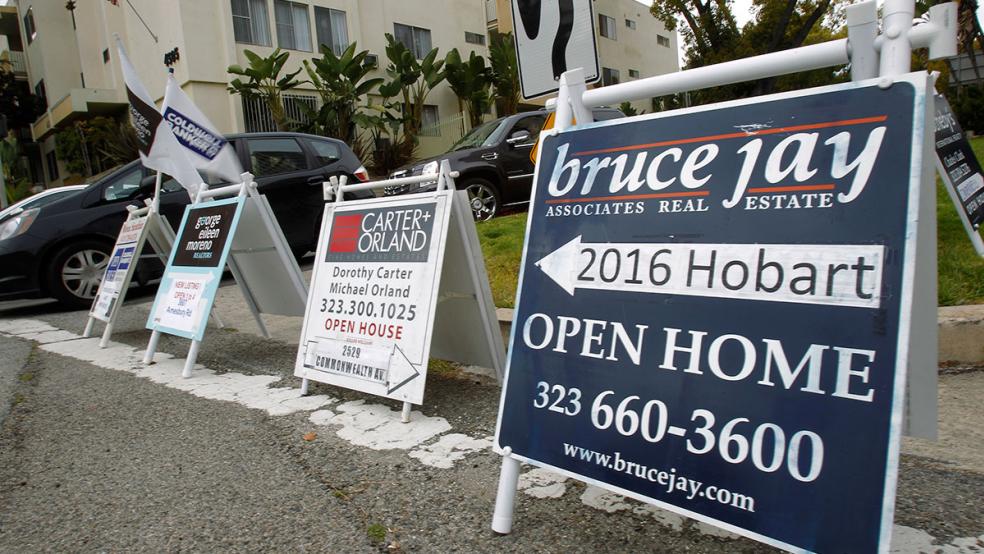Nearly a decade after the real estate crisis set off wild swings in the housing market, most markets finally stabilized last year. The election of Donald Trump has brought uncertainty into the industry, however. While the President-elect built his empire on real estate, he has said relatively little about what policy changes he might make regarding housing. That’s not too unusual, since when the housing market is doing well it is generally not a campaign issue.
Here’s what the experts we spoke with expect to see in 2017:
1. Rising prices will keep pushing up homeowners’ net worth.
After a 6.3 percent increase over the past year, home prices are poised to rise another 5.2 percent through September 2017, according to a recent report from CoreLogic. Rising prices have doubled the amount of home equity held by Americans with the average homeowner gaining more than $11,000 in home-equity wealth last year alone. If home prices continue to increase as projected, Americans would add $1 trillion in home equity to their collective balance sheets next year.
2. But mortgage rates are going up.
Rates for conventional loans shot up nearly a quarter of a percentage point in the days following the election, the fastest increase since the ‘taper tantrum’ of 2013. That could be just the beginning; the Fed is expected to continue raising rates on a strong economy, and even before Trump’s election, the Mortgage Bankers Association was predicting that rates would reach 4.8 percent (an increase of nearly two percentage points) by the end of 2017.
That means that borrowers who are looking to re-fi should do so earlier in the year, and buyers should consider locking in their rates during the closing process. While some worry that rising rates could dampen the housing market, job security and wage growth are larger factors on home activity than interest rates.
3. It’s getting easier to get a mortgage.
It’s easier to get a mortgage now than at any time in the past eight years, according to the Mortgage Credit Availability Index. That reflects an increased availability of both jumbo loans and low down-payment loans. Banks may also be more willing to work with borrowers over the next few years as they look to make up for a decline in refinancing business when interest rates go up. “The pendulum has been swinging toward a loosening of the credit box a bit,” says Daren Blomquist, a senior vice president with Attom Data Solutions. “I don’t think we’ll see a reversal of that with the new administration. We’ll likely see an acceleration.”
4. Rents will continue to level off.
While rents in most large metro areas will continue to increase next year, they’ll grow at just 1.7 percent next year, following a similar growth this year, according to Zillow’s rent forecast. The modest gains follow years of double-digit growths in many places and reflect inventory finally catching up with demand as builders create new apartment buildings to accommodate the nearly 40 percent of Americans who are choosing to rent rather than buy housing.
5. The share of cash buyers will move closer to normal.
All-cash buyers fell below 30 percent of home sales this year for the first time since 2007, and they’re projected to decline for the next two years until they get back to their historical average of about 25 percent, according to CoreLogic. That’s good news for some homebuyers who have struggled in recent years to compete with all-cash buyers in bidding wars.
6. New homes are getting smaller.
The median square footage for new homes this year fell for the first time since the recession. Smaller homes are the product of several trends driving the real estate market, including higher demand for homes close to city centers where space is tight, and continued growth in the “tiny home” movement.
The shift also reflects a renewed focus by builders on the neglected market of entry-level buyers. “They’re building smaller homes because people can’t afford to buy the larger homes anymore,” Chief Economist at Texas A & M’s Real Estate Center.
7. Inventory will remain tight.
While builders have increased production, they’re still only putting homes up at about 60 percent of the normal pace. Total housing inventory at the end of September increased 1.5 percent to 2.04 million existing homes for sale, but that’s still 7 percent lower than last year. Unsold inventory in September was at a 4.5 percent-month supply, down from 4.6 percent the previous month. (A six-month supply is considered a healthy market.)
That continued lack of inventory is one of the main factors behind rising prices. “It’s driven by supply and demand,” says Sam Khater, deputy chief economist at CoreLogic. “The lack of affordable supply is really driving up home prices.”
8. Foreign buyers will play a smaller role.
Foreign buyers, who have helped fuel the luxury real estate market in recent years, backed off a bit this year amid rising prices and an appreciated dollar and increased scrutiny from the Treasury Department. That trend may accelerate as foreign investors weigh the impact of a Trump presidency on their purchase.
9. It’s getting easier for first-time buyers. After years of shutting them out, the market has become slightly more welcoming to first-time buyers. “On the supply side, builders are finding business models to provide the level of product, such as townhouses, that first-time buyers are looking for,” says Robert Dietz, chief economist with the National Association of Home Builders. “And on the demand side, wage gains and the demographics of today’s millennials who are marrying and having kids later, will help.”
Millennials are more secure in their jobs, so they’re better qualified for mortgages, particularly the low down payment options. While inventory is still tight, many institutional investors have left the market, which makes it easier for first-time home buyers to compete for entry-level properties.





